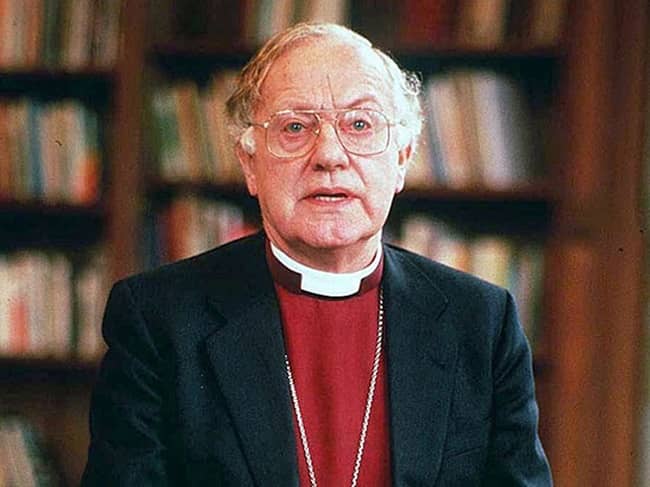Table of Biography
Robert Runcie was an English Anglican bishop. Robert Runcie served as the Archbishop of Canterbury from 1980 to 1991 after serving as the Bishop of St. Albans.
Early Life
Robert Runcie was born Robert Alexander Kennedy Runcie on October 2, 1921, in Birkenhead, Cheshire. He was raised in Great Crosby, Lancashire by his middle-class and rather non-religious parents.
Runcie first went to St. Luke’s Church in Crosby (where he was confirmed in 1936) before transferring to St. Faith’s Anglo-Catholic Church approximately a mile away. Robert attended Merchant Taylors’ Boys’ School in Crosby for his education before transferring to Brasenose College in Oxford.
He frightened many when he returned to Oxford by receiving first-class honors in Greats. He was a part of the Conservative and Socialist groups at Oxford. And he first met the young Margaret Thatcher (then Margaret Roberts). This encounter would prove crucial to his archiepiscopal tenure.
Ordained Ministry
In place of a second bachelor’s degree in theology, Robert Runcie studied for ordination at Westcott House in Cambridge and was awarded a diploma. He was appointed as a curate in the parish of All Saints in wealthy Newcastle. Runcie was invited to return to Westcott House as chaplain and later vice-principal after two years. He was appointed fellow and dean of Trinity Hall in Cambridge in 1956 when he first met Rosalind, the college bursar’s daughter, who would become his future wife.
He returned to the world of theological colleges in 1960, taking on the roles of the principal of Cuddesdon College and vicar of the community church. During ten years, he turned what had previously been a very hermit-like and Anglo-Catholic institution into a bastion of the liberal Catholic heritage of the Church of England. His future as a bishop was being strongly discussed during this time, and when he was named Bishop of St. Albans in 1970, the talk was proven to be true.
The Diocese of St. Albans was a flourishing suburban area in the 1950s, popular with families leaving a shrinking London. He was appointed chairman of the combined Anglican-Orthodox Commission and engaged in diocesan work in addition to his work with broadcasters as the head of the Central Religious Advisory Committee.
Archbishop of Canterbury
Ronald Runcie was chosen to succeed Donald Coggan as Archbishop of Canterbury in 1979 as he was getting ready to step down from office. There is proof that Runcie was the Crown Appointments Commission’s second option after Hugh Montefiore after the former newly elected Conservative government found Montefiore to be politically unacceptable. On March 25, 1980, he assumed his position as archbishop.
During his tenure as Archbishop of Canterbury, he saw the once cordial ties between the Conservative (i.e., Tory) Party and the Church of England, which was frequently referred to as “the Tory party at prayer,” break broken.
The breakdown was primarily caused by the church’s political pronouncements and Margaret Thatcher’s support of individualism and wealth creation. Her 1987 remarks were misquoted as stating that “there is no such thing as society” when, in fact, she had said, “Who is society’? Some Anglicans felt that saying (“There is no such thing! “), was callous and un-Christian.
Runcie performed the marriage ceremony for Charles, Prince of Wales, and Lady Diana Spencer in 1981.
More…
A 1985 church report called Faith in the City that criticized how the government handled social issues in British inner-city districts caused a rift between the Church of England and members of the Conservative administration, particularly Norman Tebbit.
Tebbit, who believed that institutions connected to the British state should refrain from expressing what he perceived as overtly partisan political views, became a fervent advocate for the disestablishment of the Church of England.
Retirement and Death
Robert Runcie stepped down as Canterbury’s archbishop on January 31, 1991. He was made a life peer on February 1 and gazetted as Baron Runcie of Cuddesdon in the County of Oxfordshire on February 7.
This allowed him to return to the House of Lords, where he had previously served as a Lord Spiritual. He was buried on the grounds of St. Albans Cathedral after passing away from cancer there in 2000.
Personal Life
Robert Runcie was a married man. He married Rosalind on 5 September 1957. His wife was a pianist. They were the parents of two children named James Runcie, a novelist, and Rebecca Runcie. Likewise, he had four grandchildren named Rosie, Charlotte, Matthew, and Edward. Unfortunately, he died on January 12, 2012.
Robert Runcie – Net Worth 2023
Robert Runcie was a successful bishop of his time. He might have earned a decent amount of money throughout his career. However, he hadn’t shared his earnings and net worth.
Body Measurements
As for her physical appearance, there is no information about his height, weight, dress size, waist size, and so on. But looking at his pictures we can assume that he had a pair of brown eyes with a bald head.
Robert Runcie – Social Media
There was no huge use of social media in his time. So, he didn’t use any social media sites like Facebook, Instagram, Twitter, and so on.




